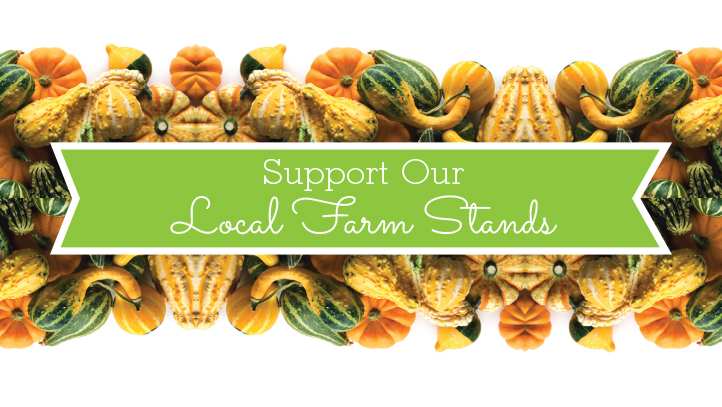

Butternut
Cucurbita moschata
This bottle-shaped squash is one of the most common but with good reason. Its tangerine-colored flesh is low in fat and has significant doses of potassium, fiber, and vitamins A, B6, and C. Butternut squash, with its long, thick neck, also has the most flesh within. And since the skin is so smooth, it makes for an easy peel. Because of its flavor, this squash combines well with a large variety of seasonings, from bacon to cinnamon, or without other flavors at all. It even tastes great wrapped in a burrito with other goodies.
Great for purees, roasting, and soups.
Carnival
Cucurbita moschata
This fun-colored, pumpkin-shaped squash has a sweet, mellow flavor comparable to butternut squash. Like the butternut, the carnival's skin must also be peeled. By the way, if your winter squash has tender skin, it wasn't allowed enough time to ripen. In this case, use this beauty as a decoration until it ripens, and when the time comes to eat it, do so. The thick skin on winter squash is what allows this squash to last awhile. The carnival's yellow flesh is flavorful like sweet potatoes and can be turned into a fine stuffing or steamed/baked with butter and fresh herbs.
Great for roasting and stuffing.
Delicata
Cucurbita pepo
Resembling a fat cucumber, this oblong, pale yellow squash is also called sweet potato squash because of its texture and sweet creamy flavor. No peeling is needed because the delicata's skin is completely edible. Being very filling and easy to cook, this squash makes a perfect substitute for starchy carbs. Delicata squash is a good source of magnesium, manganese, and vitamins A & C. Why not try it with butter and brown sugar caramelized from the oven or with butter and herbs?
Great for roasting and stuffing.

Hubbard
Cucurbita maxima
The hubbard squash is a large winter squash that can weigh from eight to twenty pounds and range in color from gray-blue to orange to green. Under its hard, thick, and nubbly skin is savory, sweet, yellow flesh. The flesh is best suited for mashing or pureeing for pie filling because it is sometimes grainy in texture. If stored correctly, this squash can last up to six months! The hubbard is a wonderful source of vitamin A. When seasoning, try it with butter and cumin or nutmeg, and then turn the leftovers into a delicious spice cake.
Great for mashes, pie filling, and purees.
Sugar Pie
Cucurbita pepo
Round, small, and sweet with brightly colored orange skin, this squash is perfect with almost everything. Unlike its larger field pumpkin friends, the sugar pie and other smaller pumpkins make for a great addition to any meal, much like acorn squash. When pureed, the sugar pie is great in breads, pancakes, soups, and even pasta dishes, such as ravioli. These versatile little pumpkins can even be hollowed out and roasted to hold custards or soups as a fun and useful decoration for your fall dinner parties.
Great for breads, pancakes, pie filling, purees, ravioli, risottos, and soups.
Turban
Cucurbita maxima
This lovely squash comes in a variety of peculiar shapes and colors, including green, orange, and yellow. Although very decorative, the turban squash can definitely be roasted and eaten. Peeling this squash will be much easier after baking it for a bit. Larger versions of this squash may be roasted and filled with soup to be used as edible bowls; the hazelnut flavor and floury texture lends itself well to this. The turban is also a good source of vitamin A and C, as well as potassium and iron.
Great for purees, roasting and soups.


